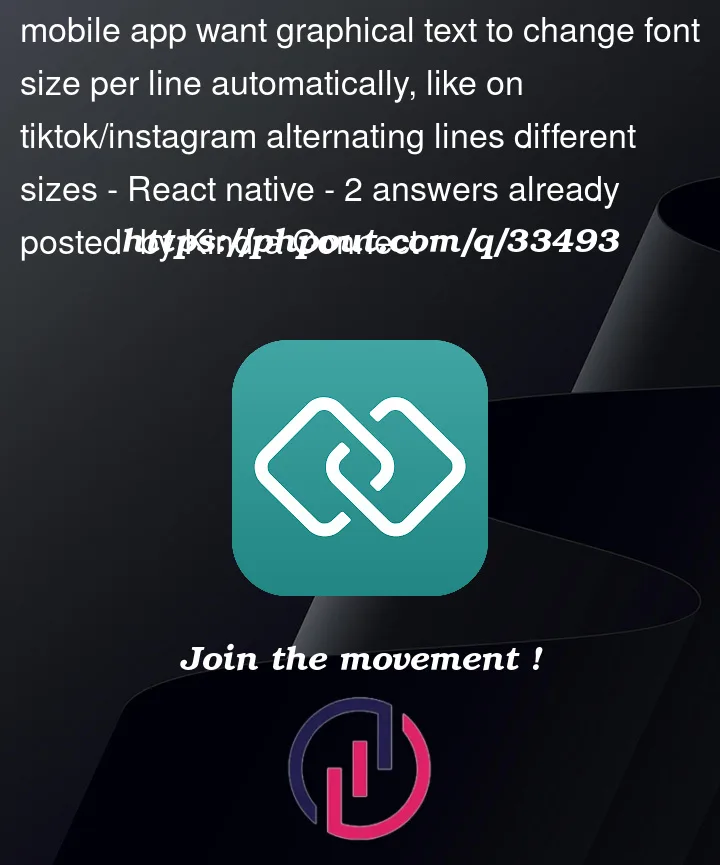On TikTok and Instagram, they can generate automatically text font size like this image, where alternating lines have different font sizes automatically. I’m trying to figure out how to code that in React Native for mobile IOS and Android: [[enter image description here](https://i.stack.imgur.com/vkhIo.jpg)](https://i.stack.imgur.com/XcjLq.jpg)
I couldn’t figure it out. I made something that I’m not crazy about, which is just having a larger font on the first three lines and then a smaller font. See image: But I don’t like it. enter image description here




2
Answers
I totally misunderstood what
PixelRatio.getFontScaledid. I thought it would provide the average width a single character takes up on screen. If you can find a way to get a rough estimate of the width of a single character, then this method will work link:And then in use:
I just found out that onTextLayout is a thing. It gives about each line in the Text component, including info about the characters present on each line. This could be used to figure out where to break lines of text (no planned web support):
After tying the str prop to a text input it became very clear that it is ideal to prevent this component from re-rendering as much as possible so I made additional changes (demo)
Its important to note that objects/arrays that arent memoized/state/refs will cause the memoized component to re-render, even if the values are static e.g
containerStyle and lineStyles are getting new objects and arrays every time its parent component re-render, which will make MultiLineText re-render (even though its memoized). After moving the containerStyle to the stylesheet and memoizing lineStyles re-rendering becomes better: